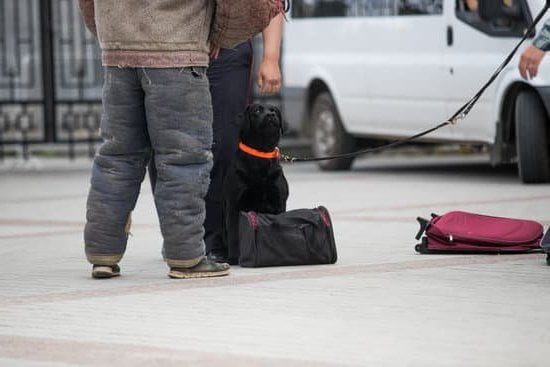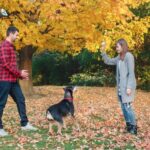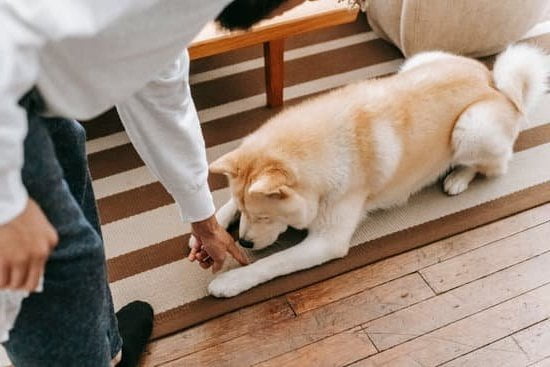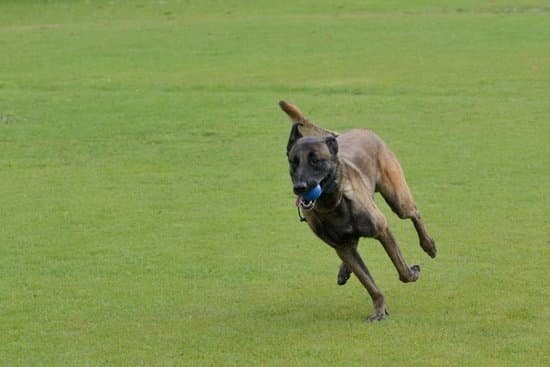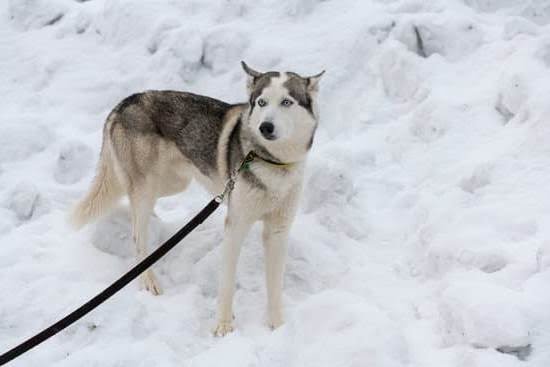Are you wondering how to potty train one year old dog? Potty training is an essential part of owning a dog, regardless of their age.
In this article, we will discuss the importance of potty training a one-year-old dog and provide you with practical tips and techniques to effectively potty train your furry friend. From understanding your dog’s behavior and routine to choosing the right potty spot and equipment, we will cover all the necessary aspects of successful potty training.
Potty training a one-year-old dog is important for both the well-being of your pet and the cleanliness of your home. Understanding your dog’s behavior and routine is crucial in establishing an effective potty training schedule.
Consistency is key in maintaining the routine, while positive reinforcement techniques play a vital role in encouraging good habits. Dealing with accidents and being patient throughout the process is also a significant aspect of potty training that we will explore in this article.
Setting up a proper potty training schedule, choosing the right spot and equipment, using positive reinforcement techniques, dealing with accidents, and maintaining consistency are all integral parts of successfully potty training a one-year-old dog. By following our comprehensive guide, you can ensure that your canine companion learns good bathroom habits, leading to a clean and stress-free living environment for both you and your pet.
Understanding Your Dog’s Behavior and Routine
Learning Your Dog’s Signals
One of the most important aspects of potty training a one-year-old dog is understanding their behavior and routine. Every dog has their own signals that indicate when they need to go potty. These signals can include pacing, sniffing around, circling, or suddenly becoming restless. By learning to recognize these cues, you can anticipate when your dog needs to go outside and take them before accidents happen.
Establishing a Routine
Dogs thrive on routine, so it’s essential to establish a consistent schedule for potty breaks. Take note of your dog’s natural bathroom habits and try to align your schedule with theirs. Typically, dogs need to go potty first thing in the morning, after meals, after playtime, and before bedtime. By sticking to a regular routine, you can help your dog understand when it’s time to go outside.
Understanding Breed-Specific Behaviors
Different breeds have different temperaments and behaviors when it comes to potty training. For example, smaller breeds may need more frequent potty breaks due to their smaller bladders, while larger breeds may be able to hold it for longer periods. It’s important to consider your dog’s breed-specific traits when establishing a potty training schedule and anticipating their needs.
By understanding your dog’s behavior and routine, you can set them up for success in their potty training journey. Recognizing their signals, establishing a routine, and considering breed-specific behaviors are all crucial steps in effective potty training for a one-year-old dog.
Setting Up a Potty Training Schedule
Establishing Routine
When it comes to potty training a one-year-old dog, establishing a routine is crucial. Dogs thrive on routine and consistency, so it’s important to set up a potty training schedule that aligns with your dog’s natural elimination needs. Understanding your dog’s behavior and routine will help you anticipate when they need to go outside.
Frequency of Bathroom Breaks
One-year-old dogs typically need to go outside for bathroom breaks every 4-6 hours. Take note of the times when your dog typically needs to relieve themselves and incorporate these into the potty training schedule. Additionally, keep in mind that some dogs may have different needs depending on their breed, size, and overall health.
Mealtime and Bathroom Breaks
Mealtime can be closely linked to bathroom breaks for dogs. Incorporating mealtime into the potty training schedule can help regulate when your dog needs to go outside. It’s common for dogs to need to go out shortly after eating, so timing bathroom breaks around mealtime can be beneficial in the potty training process.
By setting up a consistent potty training schedule that aligns with your one-year-old dog’s natural routine, you can effectively establish good bathroom habits and minimize accidents in the house.
Choosing the Right Potty Spot and Equipment
When it comes to potty training a one-year-old dog, choosing the right potty spot and equipment is crucial for success. By creating a designated spot for your dog to relieve themselves, you can streamline the potty training process and minimize accidents in the house. Here are some key tips for choosing the right potty spot and equipment:
1. Identify a consistent potty spot: Choose an outdoor area that is easily accessible to your dog and where they feel comfortable going potty. This could be a corner of the yard or a specific patch of grass. Consistency is key when it comes to establishing a routine for your dog’s bathroom breaks.
2. Invest in appropriate potty equipment: Consider using pee pads or artificial grass patches specifically designed for dog potty training. These can help create a defined space for your dog to go potty, especially if you live in an apartment or don’t have easy access to an outdoor area.
3. Keep the potty area clean: Whether you’re using pee pads indoors or an outdoor spot, it’s important to keep the area clean and free of odors. Regularly dispose of used pee pads and clean outdoor spots with pet-friendly odor eliminators to encourage your dog to continue using their designated potty area.
By taking these steps to choose the right potty spot and equipment, you can effectively set up a conducive environment for potty training your one-year-old dog.
For more information on how to potty train one year old dogs, check out our helpful resources on positive reinforcement techniques and dealing with accidents during the training process.
Using Positive Reinforcement Techniques
Positive reinforcement is a powerful tool when it comes to potty training a one-year-old dog. This method involves rewarding your dog for exhibiting the desired behavior, in this case, going potty in the designated spot. When your dog eliminates in the right place, be sure to praise and reward them immediately.
This can be done with treats, verbal praise, or their favorite toy. Consistency is crucial when using positive reinforcement, as it helps your dog understand what is expected of them.
It’s important to keep the rewards consistent and use them every time your dog successfully goes potty in the designated spot. Over time, as your dog starts associating going to the bathroom in the right place with receiving a reward, they will be more inclined to repeat this behavior. Positive reinforcement creates a positive association with potty training and makes it a more enjoyable experience for both you and your canine companion.
Another effective positive reinforcement technique is clicker training. This involves using a clicker to mark the exact moment your dog exhibits the desired behavior, followed by giving them a treat as a reward. The clicking sound helps your dog understand exactly which action they are being rewarded for. Clicker training can be especially helpful for one-year-old dogs who may have difficulty understanding verbal commands alone.
| Positive Reinforcement Technique | Description |
|---|---|
| Rewarding with treats | Provide treats immediately after your dog successfully goes potty in the correct spot. |
| Clicker Training | Use a clicker to mark the exact moment of desired behavior and follow with a treat as a reward. |
Dealing With Accidents and Patience
Accidents are bound to happen during the potty training process, especially when training a one-year-old dog. It’s important not to get frustrated with your furry friend when this occurs. Instead, remain patient and understand that learning a new habit takes time and persistence. Reacting harshly to accidents may cause your dog to become anxious or scared, hindering the potty training progress. Instead, use accidents as a learning opportunity for both you and your pup.
When accidents do happen, it’s crucial to clean up the mess thoroughly to eliminate any lingering odors that may attract your dog back to the same spot for future accidents. Using an enzymatic cleaner is recommended for effectively removing the scent of urine or feces from carpets, floors, or other surfaces.
Additionally, keeping a close eye on your dog and understanding their body language can help in preventing future accidents. Signs such as sniffing around or circling in a specific area may indicate that they need to go outside.
It’s also essential to set realistic expectations when potty training a one-year-old dog. While some puppies may catch on quickly, others may take longer to grasp the concept. Understanding this will help in maintaining patience and consistency throughout the training process.
| Aspect | Description |
|---|---|
| Clean-up | Thorough cleaning after accidents are crucial |
| Body Language | Understanding your dog’s signals can prevent future accidents |
| Patient Expectations | Setting realistic expectations is key in remaining patient throughout the process |
Consistency Is Key
Once you have established a potty training schedule and have begun to see some progress in your one-year-old dog’s potty training, it is important to maintain consistency. Consistency is key when it comes to reinforcing good potty habits and preventing accidents in the future. By staying consistent with your approach, you can help your dog fully grasp the concept of where they should be going potty.
1. Stick to the Schedule: Continue taking your dog outside at the same times each day. This will help reinforce the routine and signal to your dog when it is time to go potty. Consistently taking them out after meals, before bed, and first thing in the morning can help prevent accidents indoors.
2. Positive Reinforcement: Keep using positive reinforcement techniques such as praise, treats, and rewards every time they successfully go potty outside. This will encourage your dog to continue the good behavior and associate going potty in the right spot with positive experiences.
3. Supervision: Maintain close supervision of your one-year-old dog, especially during periods when they are more likely to need to go potty such as directly after waking up or playing. This will allow you to quickly redirect them towards their designated potty spot if needed.
By maintaining a consistent routine and being diligent with reinforcement and supervision, you can set your one-year-old dog up for long-term success in their potty training journey.
Celebrating Success
In conclusion, potty training a one-year-old dog is a challenging but crucial process for both you and your furry companion. By understanding your dog’s behavior and routine, setting up a consistent schedule, choosing the right potty spot and equipment, using positive reinforcement techniques, and maintaining patience through accidents, you can successfully potty train your one-year-old dog.
Consistency is key in this process, so it’s important to maintain the routine even after your dog has graduated from potty training.
After successfully potty training your one-year-old dog, it is important to celebrate this achievement and continue implementing good habits. Positive reinforcement techniques should still be used to encourage your dog to keep up the good behavior. Additionally, keeping a close eye on their routine and making sure they have access to the designated potty spot will help in maintaining their good habits.
Remember that every dog is different, and some may take longer to fully grasp potty training than others. It’s crucial to remain patient and consistent throughout the process.
With time, effort, and a lot of love, you can successfully teach your one-year-old dog how to potty train effectively. If you have any further questions about how to potty train one year old dog effectively, seek advice from a professional trainer or veterinarian who can provide tailored guidance for your specific situation.
Frequently Asked Questions
Can You Potty Train a 1 Year Old Dog?
Potty training a 1-year-old dog is definitely possible, but it requires consistency and patience. Like with puppies, establishing a routine for bathroom breaks, positive reinforcement, and crate training can help in the process.
How Do I Teach My 1 Year Old Dog Not to Pee in the House?
Teaching a 1-year-old dog not to pee in the house involves proactive supervision, frequent bathroom breaks, and positive reinforcement for peeing outside. It’s important to clean any accidents thoroughly to remove lingering scents.
Can a 1 Year Old Be Fully Potty Trained?
Yes, a 1-year-old dog can be fully potty trained with the right approach and consistency. It’s essential to maintain a routine, offer positive reinforcement for good behavior, and be patient as your dog learns this important skill.

Welcome to the blog! I am a professional dog trainer and have been working with dogs for many years. In this blog, I will be discussing various topics related to dog training, including tips, tricks, and advice. I hope you find this information helpful and informative. Thanks for reading!

